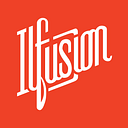How to Balance Digital and Print Design for Your Marketing

While innovations in digital marketing may grab the headlines, print design still has its place in modern marketing.
A study by Harvard Business Review (HBR) found that more business-to-consumer (B2C) brands are increasing their budgets for traditional advertising, and it’s predicted that the trend will continue in 2023 and beyond.
Why Are Print Design and Traditional Marketing Still Relevant?
In this era where people spend most of their time looking at screens, a break from digital media can be a welcome change. It’s also been found that digital users are using ad blockers more, mainly because they find digital ads intrusive and annoying.
There are also inherent benefits to using traditional marketing in today’s digital world:
- People already trust traditional media: Print designs can create a sense of trust and security in the customer. They know that what they’re seeing is reliable, which can lead to higher consumer confidence.
- Print materials provide tangible proof of a brand: People can save and keep physical materials, like flyers or business cards, which makes them more memorable.
- Print materials are more versatile: Print designs can be used in a variety of ways — from posters, brochures and magazines to t-shirts, mugs, and other brand merchandise.
4 Tips for Balancing Digital and Print Design for Your Marketing
The best approach is to use a combination of digital and print design for your marketing. Here are some tips to help you get the balance right:
1. Research your audience
Knowing your audience’s preferences and other nuisances will help you decide which mediums to focus on. When doing your audience research, consider the following, at the very least:
- Age: Older people are more likely to prefer print designs over digital ads, while younger generations tend to prefer digital.
- Location: People in different cities have varying levels of internet access and other technology available, so you may need to consider more print design if you’re targeting smaller markets or rural areas that may not have the best access.
- Nature of business: If you have a brick-and-mortar business, print design could be a great asset to your local marketing. If you’re targeting overseas consumers, digital might be the best option, or you could consider international shipping options for physical materials.
- Interests: Creating content that resonates with your target audience is essential, regardless of which medium you use.
2. Make sure your message is consistent across all channels
Your branding should always be consistent, no matter what medium you choose. Create a brand style guide that outlines the colors, logos, fonts, and other elements of your brand to ensure consistency and coherence.
However, there’s also value in tweaking how you design your print materials and how you create your digital media, as long as the messaging is more or less the same.
It also helps to work with professional designers such as Ilfusion for your print design needs. A professional designer with experience in both digital and traditional marketing will have the right tools and knowledge to help you balance and create a successful print and digital media campaign.
3. Have a clear call-to-action
No matter what medium you use, make sure to include a call-to-action (CTA) that lets your audience know what you want them to do.
Digital and print media could also go hand-in-hand. For example, including a QR code in your brochures that takes them to a landing page where they can sign up for your loyalty program. Your digital media could also encourage your customers to take advantage of your physical coupons, like the way Starbucks uses its Planner Cards.
4. Track performance using analytics
Using analytics can help you see which channels are performing the best and how people are engaging with your content. This data can then be used to inform your future marketing strategies and optimize your campaigns.
While this is easy for digital marketing campaigns, it can also be done for print media. Consider using unique codes for each of your print materials, or track the number of people who use your coupons.
How Can You Leverage Both Digital and Print Design?
There are several ways you can use both digital and print design for your marketing. Here are some ideas:
- Use QR codes: As we mentioned above, QR codes are great for linking your digital and print materials together. Use them to take customers from one medium to another and assist with tracking results.
- Create a multi-channel campaign: Make sure your print and digital materials are connected, so customers can easily find the other. This can be done with cohesive branding, consistent messaging and content, and calls to action on each platform.
- Encourage customer engagement: Give people an incentive to interact with your materials. You could offer exclusive discounts or rewards for those who take part in both digital and print campaigns.
- Make your print design interactive: Incorporate elements like puzzles, contests, or games into your print materials to make them more engaging. You could also include augmented reality (AR) content to make them come alive when they use your brand’s mobile app, if applicable.
In marketing, balance is key. It’s important to remember that digital and print design don’t have to be mutually exclusive. It’s all about finding the right balance between the two to create a successful campaign.
With the right strategy, you can leverage both digital and print design for your marketing efforts.
For more digital and traditional marketing and design tips, visit our blog at https://www.ilfusion.com/blog.
